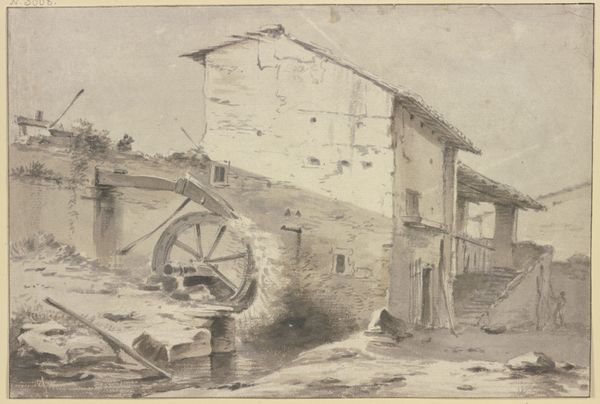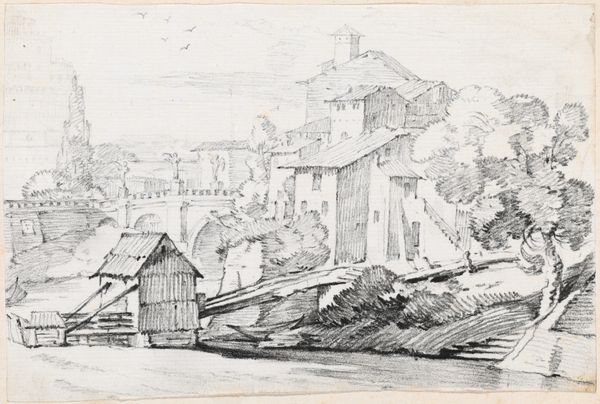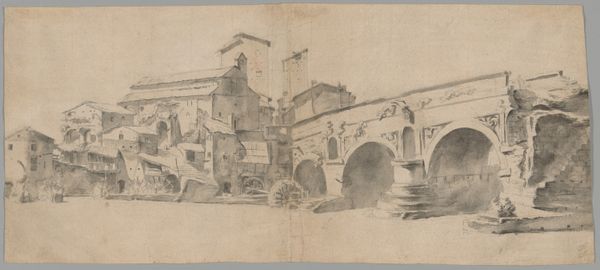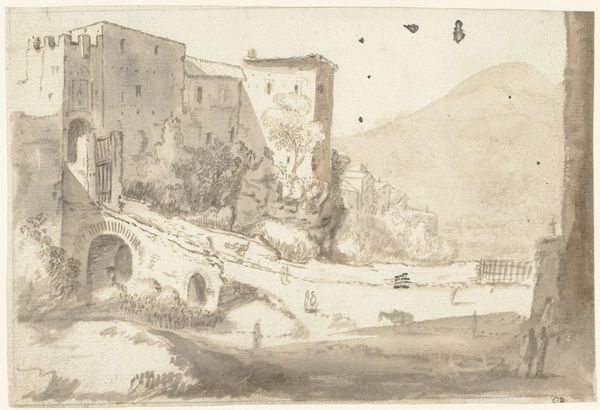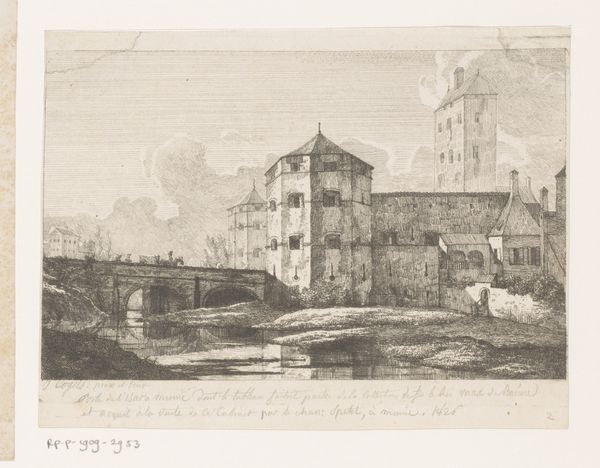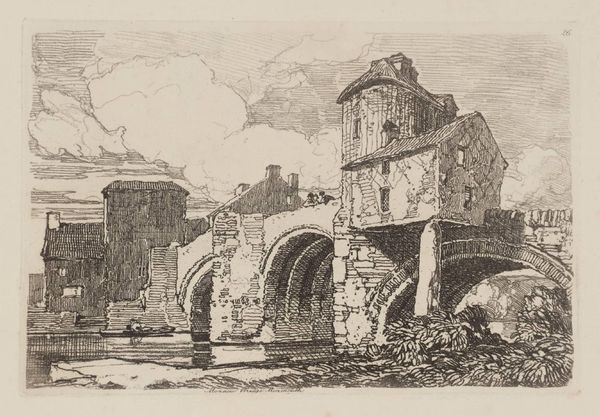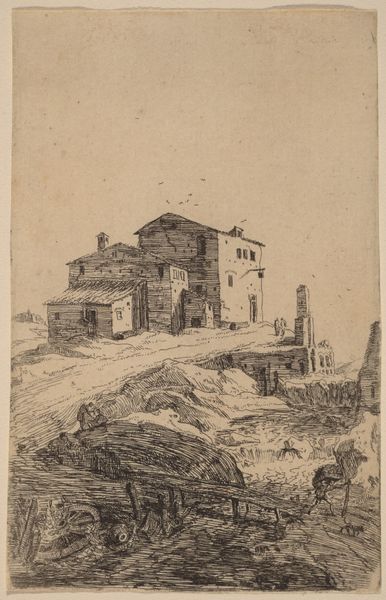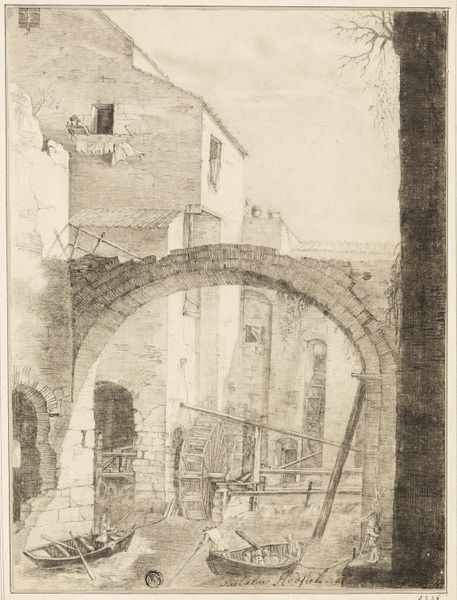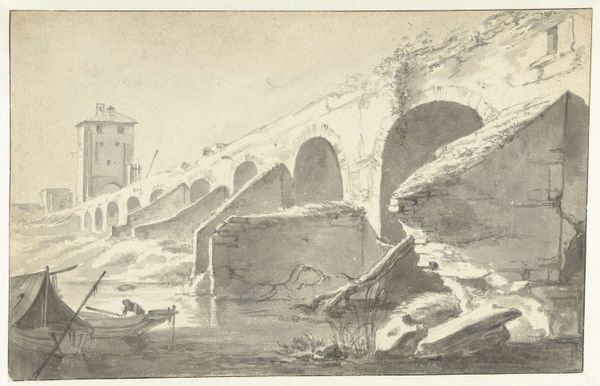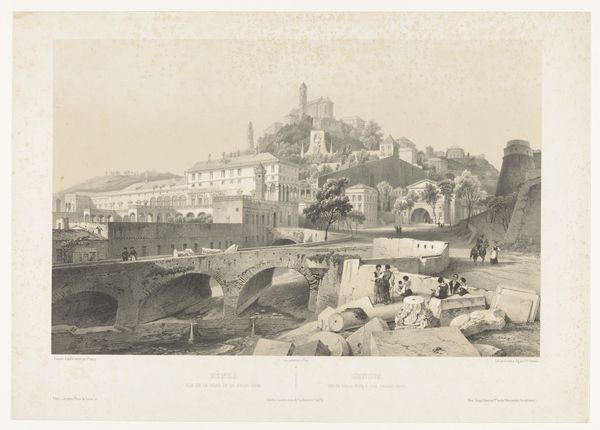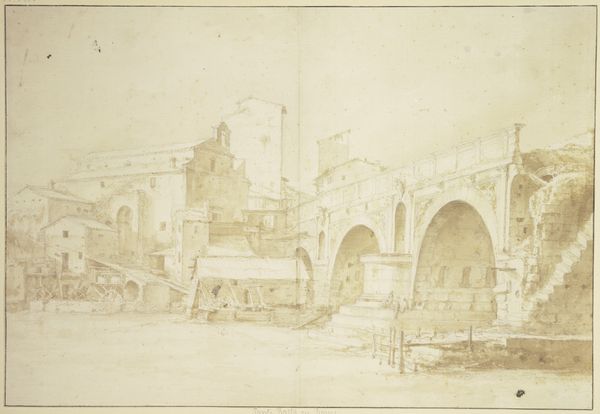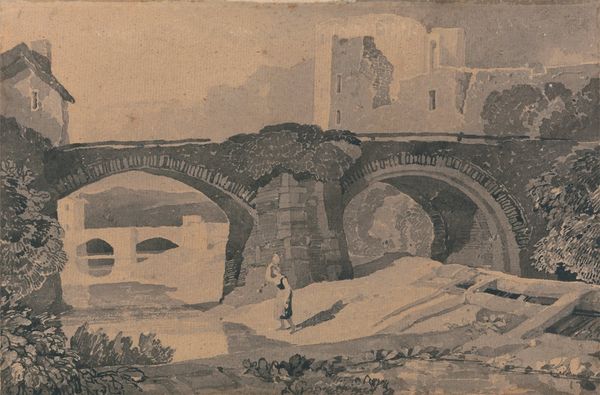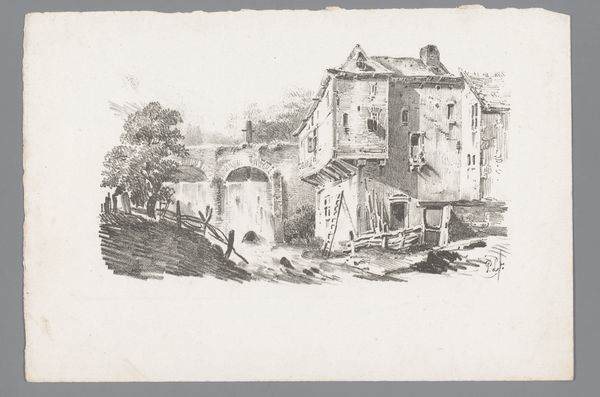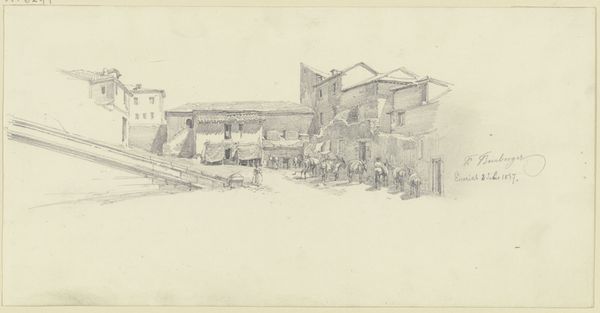
drawing, pencil, architecture
#
drawing
#
16_19th-century
#
landscape
#
romanticism
#
pencil
#
architecture
Copyright: Public Domain
Curator: This drawing is called "Aniene in den Albaner Bergen bei Tivoli," placing it somewhere in the vicinity of Tivoli, in the Alban Hills. It's believed to be made by Johann Heinrich Hasselhorst during the 19th century. What's your immediate impression? Editor: Melancholy, yet… picturesque. I love the texture of the pencil work; you can almost hear the water rushing and the faint echo of voices in the distance. The architecture feels… haunted, yet the overall mood isn't dismal. Curator: The use of pencil lends itself to a kind of documentary precision. I find it compelling how the medium can serve to both render details faithfully and offer itself to interpretation. You can examine the architectural style here, particularly how the structures incorporate locally sourced material. Notice the raw brickwork and its interplay with vegetation. It speaks to a material exchange with nature. Editor: It's like the architecture itself is becoming a ruin, slowly consumed. I can imagine Hasselhorst standing here, sketching, pondering the passage of time, the ephemeral nature of even the most seemingly permanent structures. Did these materials factor into consumption, do you think? Is this artwork an artifact of resource consumption? Curator: It absolutely reflects contemporary material culture. It is a window into landscape exploitation in the 19th-century rural areas as picturesque idyll and industrial resources collided, leading to both leisure and ecological change in how these spaces were seen and exploited.. The way buildings were designed reflected available resources, the demands for shelter, storage, or industry and its integration within larger commercial economies. Editor: Makes you wonder who those tiny figures are on the bridge. Perhaps oblivious to the greater economic forces at play, just enjoying a leisurely stroll? I'm drawn to the duality; the industrial presence and the individual human experience juxtaposed. Curator: Well said. A complex interplay, no doubt. Hasselhorst captured a very unique confluence of circumstances here. Editor: A poignant reminder that even beauty is often built upon layers of material realities and consumption habits we are prone to forgetting about. Thanks for pointing that out.
Comments
No comments
Be the first to comment and join the conversation on the ultimate creative platform.
